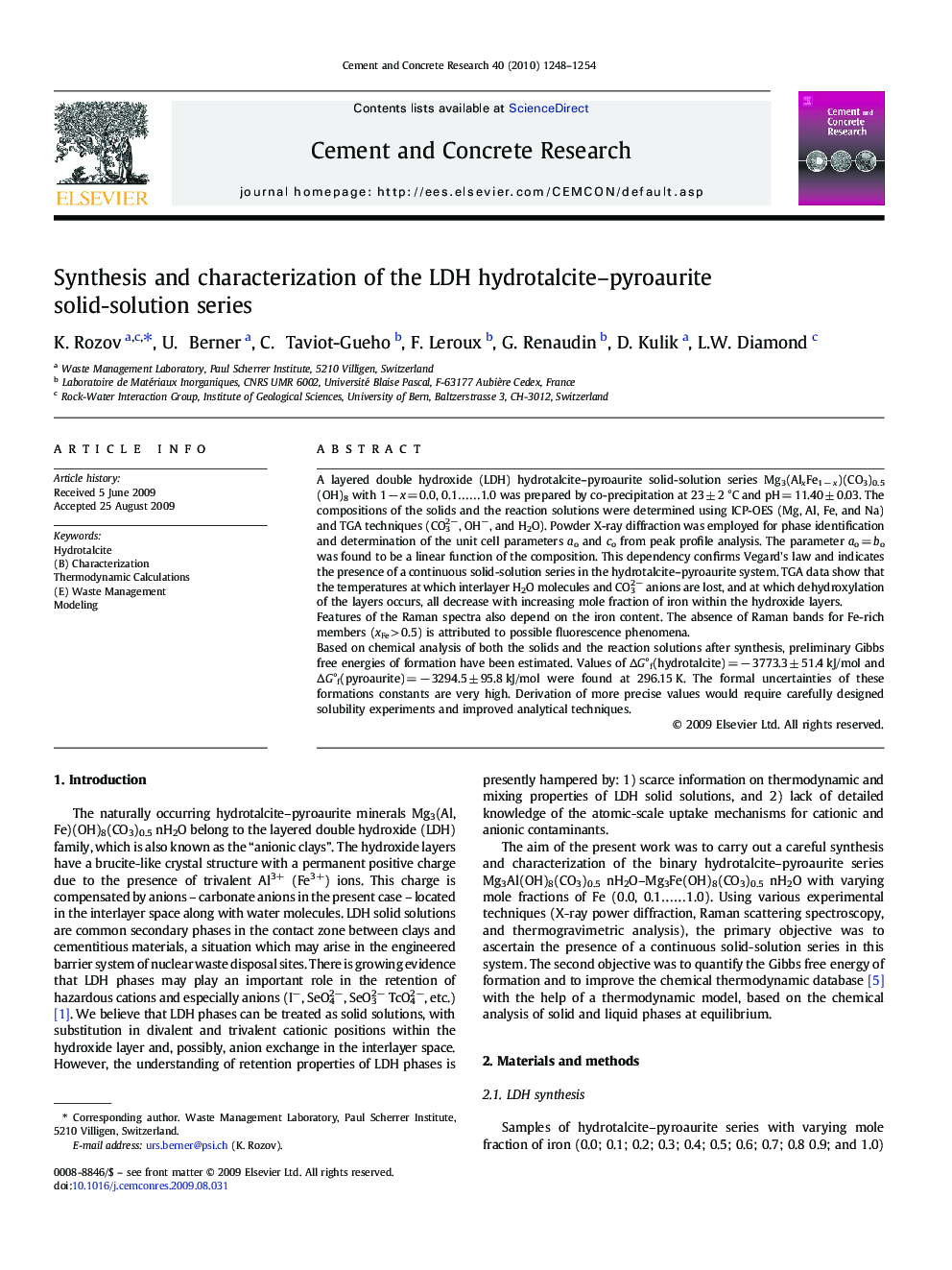| Article ID | Journal | Published Year | Pages | File Type |
|---|---|---|---|---|
| 1457389 | Cement and Concrete Research | 2010 | 7 Pages |
A layered double hydroxide (LDH) hydrotalcite–pyroaurite solid-solution series Mg3(AlxFe1 − x)(CO3)0.5(OH)8 with 1 − x = 0.0, 0.1……1.0 was prepared by co-precipitation at 23 ± 2 °C and pH = 11.40 ± 0.03. The compositions of the solids and the reaction solutions were determined using ICP-OES (Mg, Al, Fe, and Na) and TGA techniques (CO32−, OH−, and H2O). Powder X-ray diffraction was employed for phase identification and determination of the unit cell parameters ao and co from peak profile analysis. The parameter ao = bo was found to be a linear function of the composition. This dependency confirms Vegard's law and indicates the presence of a continuous solid-solution series in the hydrotalcite–pyroaurite system. TGA data show that the temperatures at which interlayer H2O molecules and CO32− anions are lost, and at which dehydroxylation of the layers occurs, all decrease with increasing mole fraction of iron within the hydroxide layers.Features of the Raman spectra also depend on the iron content. The absence of Raman bands for Fe-rich members (xFe > 0.5) is attributed to possible fluorescence phenomena.Based on chemical analysis of both the solids and the reaction solutions after synthesis, preliminary Gibbs free energies of formation have been estimated. Values of ΔG°f(hydrotalcite) = − 3773.3 ± 51.4 kJ/mol and ΔG°f(pyroaurite) = − 3294.5 ± 95.8 kJ/mol were found at 296.15 K. The formal uncertainties of these formations constants are very high. Derivation of more precise values would require carefully designed solubility experiments and improved analytical techniques.
